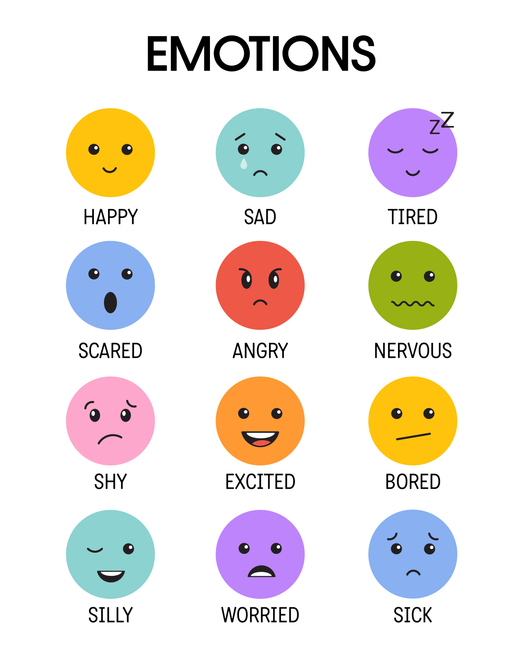What are you feeling?
Emotions and Feelings
Why Labeling Helps: When you label your feelings, you calm your brain, activate your thinking skills, and regain a sense of control. Naming an emotion—like "I'm anxious" or "I'm frustrated"—helps your mind shift from reacting to responding. It's a simple way to move from overwhelmed to empowered.

Labeling your feelings—a practice sometimes called “affect labeling”—can have powerful emotional and neurological effects. Here's what happens when you label your feelings:
✅ 1. It Calms Your Brain
When you name what you feel (“I’m anxious” or “This is frustration”), the amygdala (your brain’s alarm system) reduces activity. This gives your prefrontal cortex—the part responsible for thinking and problem-solving—a chance to step in.
🧠 It’s like moving from “fight or flight” to “pause and plan.”
✅ 2. You Regain Control
When emotions stay vague, they often feel overpowering. Labeling them gives you language and clarity, which helps you feel more in charge and less overwhelmed.
“This isn’t ‘everything is terrible.’ This is just guilt or disappointment.”
✅ 3. It Builds Self-Awareness
Every time you name a feeling, you fine-tune your emotional vocabulary. Over time, this builds emotional intelligence—the ability to manage your reactions and respond skillfully.
Emotional vocabulary is like a mood map. The more words you know, the better your emotional GPS.
✅ 4. You Interrupt Negative Spirals
Labeling feelings slows down racing thoughts and helps break the cycle of rumination. This is especially powerful in anxiety, stress, and shame loops.
✅ 5. It Opens the Door to Action
Once a feeling has a name, it’s easier to ask: “What triggered this?” and “What can I do about it?” Naming becomes the first step toward coping or changing course.
Why Labeling Helps: When you label your feelings, you calm your brain, activate your thinking skills, and regain a sense of control. Naming an emotion—like "I'm anxious" or "I'm frustrated"—helps your mind shift from reacting to responding. It's a simple way to move from overwhelmed to empowered.
